REVIEWER - P.E QUIZ
1/77
There's no tags or description
Looks like no tags are added yet.
Name | Mastery | Learn | Test | Matching | Spaced |
|---|
No study sessions yet.
78 Terms
five fundamental or basic positions in dance that are commonly termed as:
first position,
second position,
third position,
fourth position, and
fifth position of the arms and feet.
Ballet was taken from the Italian word
BALLARE
to dance
BALLARE
referring to dances performed in a ballroom.
BALLO
brought it to her country which marked the staging of ballet and further developed at the French courts during the 16th century.
CATHERINE DE MEDICI (QUEEN OF FRANCE)
Ballet then also became a profession.
1672
It requires an erect spine, turned out hips, proportioned and and balanced action, and
carving fluid lines.Elevation, alignment, pointing of the foot, moving and posing of arms (port de bras), flexibility, and lightness are the other foundations for a ballet dancer.
BALLET DANCE
In classical manner, will require for an adagio (slowly), and with male and female dancers performing together (a pas de deux) or four (quarte)
Used pantomime to clarify movement.
Have the capability to convey stories that bring an audience to another world.
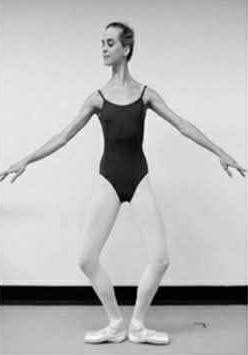
Can be done in all five positions
(Grand-Plie) - full bend, bend deeper and let the heels come off the ground while coming up
Straighten the knees and stand tall
(Demi-Plie) - half bend
PLIE OR TO BEND
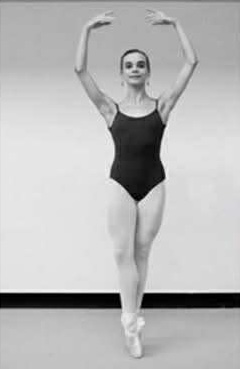
Begin with a demi-plie in order to push up from the floor
Straighten the knees and lift the heels at the same
RELEVE OR TO RISE
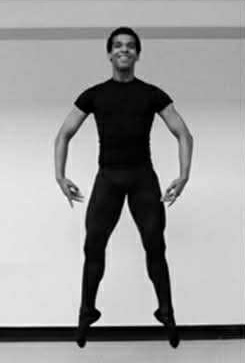
This can be done in all five positions
Start in a demi-plie, execute a vertical jump into the air and end in starting position
SAUTE OR TO JUMP
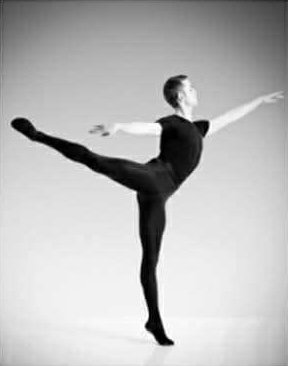
Raise one leg and extend behind the body
You can use a variety of arm shapes to harmonize with its long, extended line
ARABESQUE
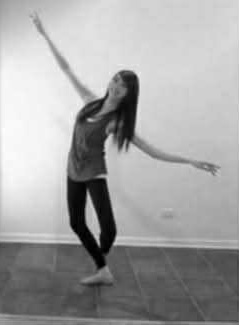
Start in releve position
Shift feet in 5th position with a rock step and bend side
End with a deme- plie
BALANCE
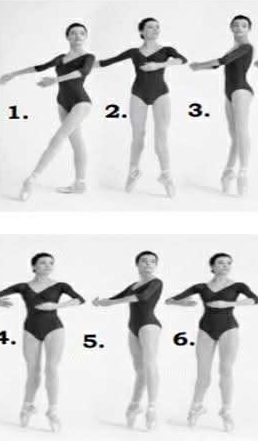
Start in 1st position in a releve
Execute a rapid traveling turns on demi-pointe staying in 1st positions
CHAINES or SERIES OF RAPID TURN, A CHAIN OR LINKS
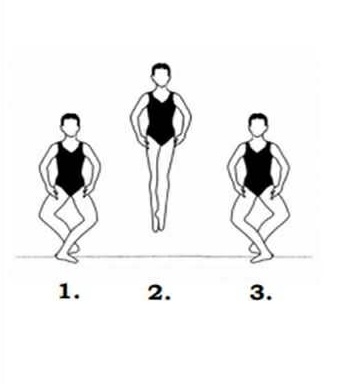
Begin in fifth position demi-plie,
Spring straight up, change the position of the feet in the air
Land with the opposite foot front in fifth position demi-plie
CHANGEMENT or TO CHANGE PLACEMENT OF HEELS WITH A JUMP
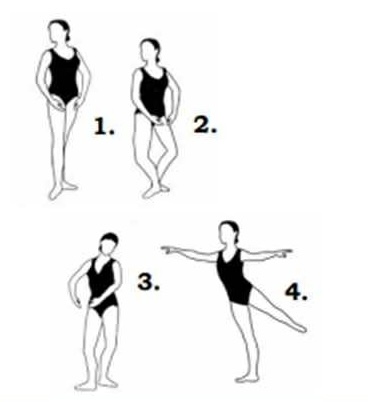
Start in a 1st or 3rd demi-plie position
Shift the weight so the front leg slides along the floor to 4th or 2nd position
Pull both legs together in the air in the chasse to the side
Both feet land together
CHASSE or A CHASING OR CONNECTING STEP
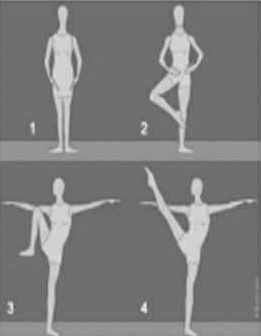
Lift the foot from 5th position to touch the ankle
Raise the foot to the knee in retire keeping the hip level and not lifting with the leg
DEVELOPPE or TO UNFOLD
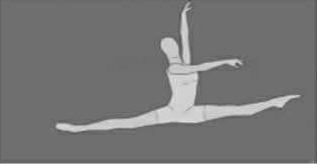
Start in 5th position demi-plie
Do a degage (raise) in plie with the working foot, pushes off the standing leg straight up, and then lands on the working leg with the standing leg in a coupe position.
In Grand Jete, this step is executed by brushing the leg high into the air, pushing off the back leg, and performing a leap. In both cases, this step may be executed in various directions
JETE or MEANING THROWN
Developed independently in America and Germany. It was then known in Germany as
AUSDRUCKSTANZ
Developed independently in America and Germany. It was then known in Germany as Ausdruckstanz,
MODERN DANCE
All of them studied ballet but found it not suitable to their temperament and movement style. They also found it confining and rejected it.
The pioneering artists were ISADORA DUNCAN, RUTH ST. DENIS, and TED SHAWN.
Dancers are barefoot, often work with feet and legs parallel, have flexible torso, and use weight and gravity to create movements and shapes.
The choreography uses all level and points in space, including the floor.
MODERN DANCE
Dancers may be placed sideways or even with backs turned to theaudience.
Explore the body in action, and give attention to choreographic materials that mirror social affairs with potential for movement from contemporary life.
MODERN DANCE
Uses minimal prop designs and costumes.
Movement are spontaneous performed by dancers in response to suggestions by the choreographer, thus allows considerable freedom to the dancer.
MODERN DANCE
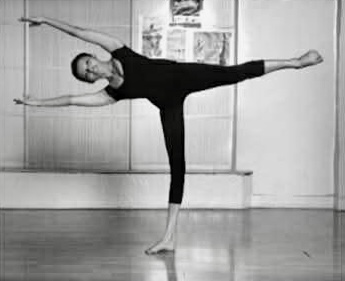
The dancers stands with the head and the spine in alignment and the supporting foot turned
LATERALS
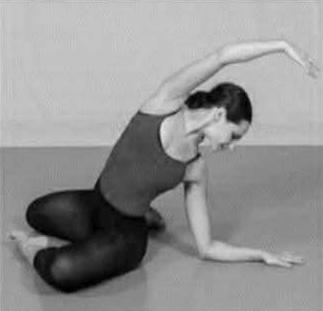
A torso twist that begins in the pelvis. As the body turns, each level is separately articulated all the way up the spine-pelvis, lower spine, mid-section, shoulders, neck, and head
SPIRAL
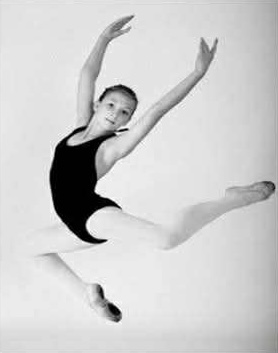
Is a very high jump in a split, but although both legs are parallel to the floor, the front leg is bent from the knee inward. Most often the arms are either thrust up in a V with palms facing out and down, or one-forward, one-to-the-side in a ninety-degree angle and palms down
STAG LEAP
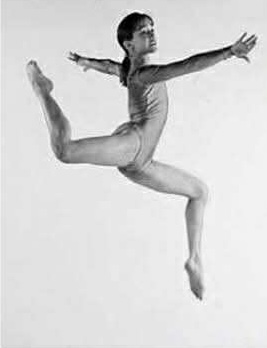
The supporting knees is slightly bent; the other leg is up in the air and bent behind the body. The arm on the supporting side is thrust straight back with the palm down. The opposite arm is thrust cleanly forward with the palms down as the dancer turns around
STAG TURN
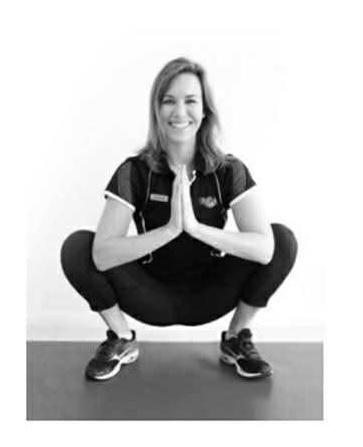
Is a hop that lands in a deep second-position plie- the feet are turned out heel to heel and the knees are bent
PRIMITIVE SQUAT
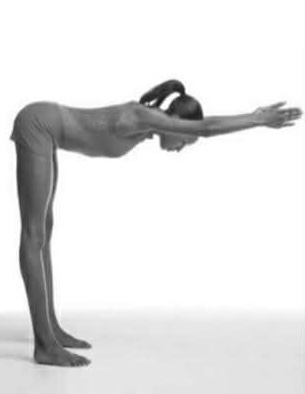
A series of moves but the basic movement makes a
"tabletop" of the body. The dancer strands in a second position- feet turned out heel-to-heel
FLAT BACK
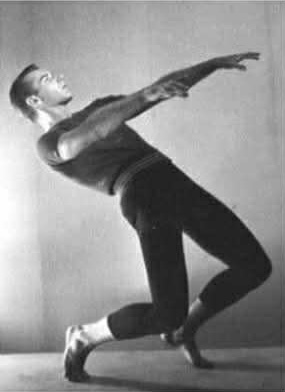
The dancer balances on the balls of the feet, keeps a straight back and head, and sends the knees forward as the torso tilts back and the arms are held straight out in front.
HINGE
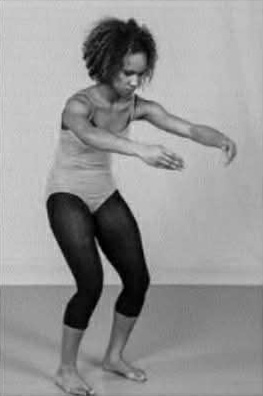
The action begins in the pelvis, and articulates up the spine as the breath is exhaled. The dancer aims to lengthen the space between each vertebra as the move progresses to the neck and the head, which are always in alignment with the spine.
CONTRACTION
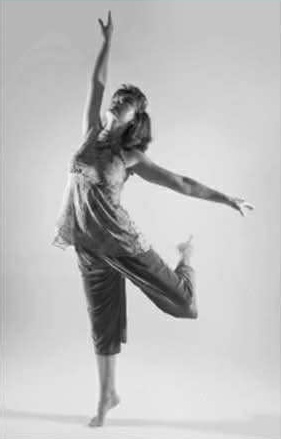
This occurs upon inhalation and also begins in the pelvis. The move travels up the spine in the same order as the contraction, restoring the torso to a straight alignment. It typically counters the contraction.
RELEASE
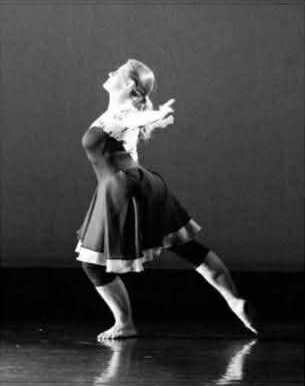
An action that tilts the breastbone up rather than ending with the spine and upper body in an upright neutral position. The shoulder blades appear to rest on a bar or shelf. The head remains aligned with the spine and the rib cage remains over the hips. The lower back is not bent.
HIGH RELEASE
Cheerdance is coined from the words:
CHEER & DANCE
Is to shout out words or phrases that may help motivate and boost the morale of a playing team and perform better during a game.
CHEER
Is a physical activity where one expresses emotions or gestures while performing bodily movements usually in time and rhythm.
DANCE
Is the performance of a routine, usually dominated by a gymnastic skill such as jumps, tumbling skills, lifts and tosses combined with shouting of cheers and yells to lead the crowd to cheer for a certain team during a game or sport.
CHEERLEADING
The first pop club was establisned at Princeton University
1870s
Usage of the megaphone was becoming popular. The first cheerleading fraterity was organized
1900s
Women became active in cheerleading. The University of Minnesota cheerleaders began to incorporate and tumbling into
1920s
Universities and high schools began performing pompom routines and using paper pompoms
1930s
The first cheerleading company was formed by Kawrence R. Herkimer of Dallas, Texas.
1940s
The (IASF) International Federation continued to host the world cheerleading championships
2008
arms are straight with fists facing down, as if holding the handle of a bucket in each hand
BUCKET
arms are straight with fists facing each other as if they were holding a lit candle in each hand
CANDLESTICK
arms are straight in sideways, open palm and fist facing down and fingers must stick together
BLADE
open palm, fingers are spread out.
JAZZ HANDS
Strike palms together in front of the chest
CLAP
clasp hands together in front of the chest
CLASP
Both arms are extended sideways parallel to the ground.
T-MOTION
Both arms are parallel to the ground and the both elbows are bent.
HALF T
Arms are stretch out in upward position; closed fist facing in
TOUCHDOWN
One arm is raised upward, while the other arm positioned downward across to the opposite side.
K MOTION
one arm is raised diagonally upward, then the other arm elbow is bent and pointing downward.
CHECKMARK
arms are extended upward; clasp hands together
OVERHEAD CLASP
Both arms are bent; clenched fists facing each other parallel to shoulders
DAGGER
BOX Both
arms are bent; clenched fists facing each other; Elbows are on
shoulder level.
Raised one arm overhead with closed fist.
PUNCH
One is raised upward; the other arm is raised on the side in shoulder level.
L MOTION
One arm is raised diagonally upward, while the other arm positioned diagonally downward.
DIAGONAL
Both arms are raised diagonally upward;
forming "V".
HIGH V
Stand Straight with both feet close together.
BEGINNING STANCE
Stand straight with feet apart.
CHEER STANCE
One leg is bent, while the other leg is extended.
SIDE LUNGE
Both knees are slightly bent facing outward.
SQUAT
body is supported by the knees.
KNEEL
As you jump, bring knees closer to chest, keep knees together.
TUCK JUMP
As you jump, both knees are bent sideways.
DOUBLE HOOK
As you jump, one leg is bent; knee is facing forward, while the other leg goes straight up.
SIDE HURDLER
As you jump, arms and legs are extended open wide.
SPREAD EAGLE
Bring straight leg up to chest and between the arms; back knee points towards the ground; land with feet together at the same time.
FRONT HURDLER
keep head up; bring legs to arms; arms parallel to the ground.
PIKE JUMP
Also known as straddle jump. As you jump, legs are open and
parallel to the ground.
TOE TOUCH
(a) squat down with hands on the ground then (b) tuck head in with chin down. (c) roll unto upper back and (d) rotate onto feet continuing to a standing position.
FORWARD ROLL
(a)From a standing position, squat down continuing to a (b) sitting position with hands place close to ears and palms facing up. (c) roll backward while placing the weight of the body on both feet, (d) through a squat continue position.
BACKWARD ROLL
(a) With one foot in front, (b) stand on one foot and lean down until both hands are on the ground, (c) transfer weight from one hand to the other while driving legs above and over the body. (d) place one leg on the ground and standing position.
CARTWHEEL
(a) From a standing position with one foot in front, (b) transter weight to hands while driving legs above over body. (C) bring the legs together in a handstand position. (d) follow by snapping down the legs and finishing with a quarter turn ending up facing the opposite direction and continue through a standing position.
ROUND-OFF